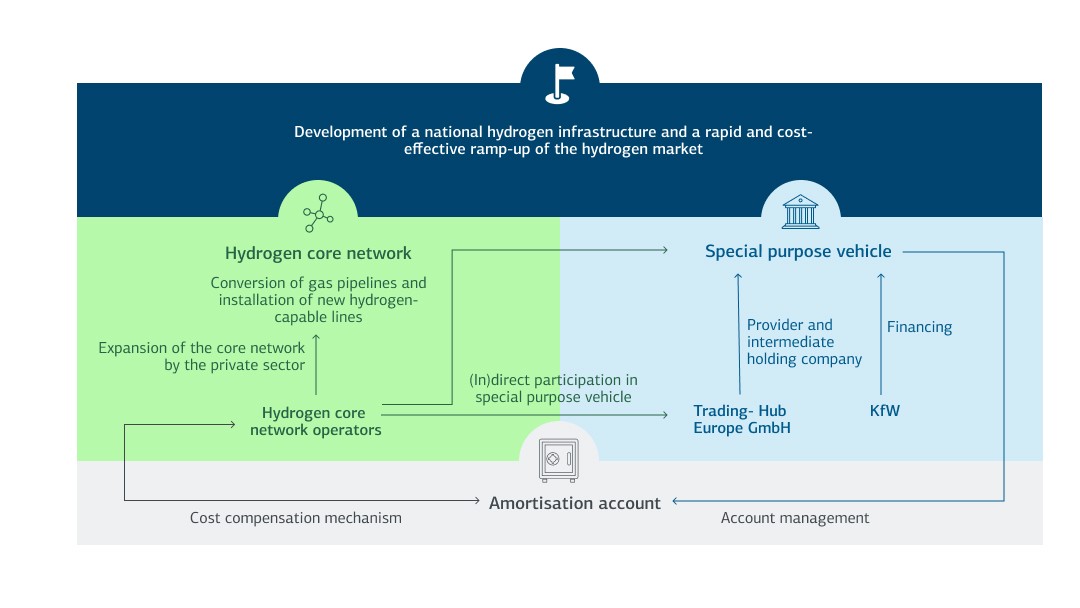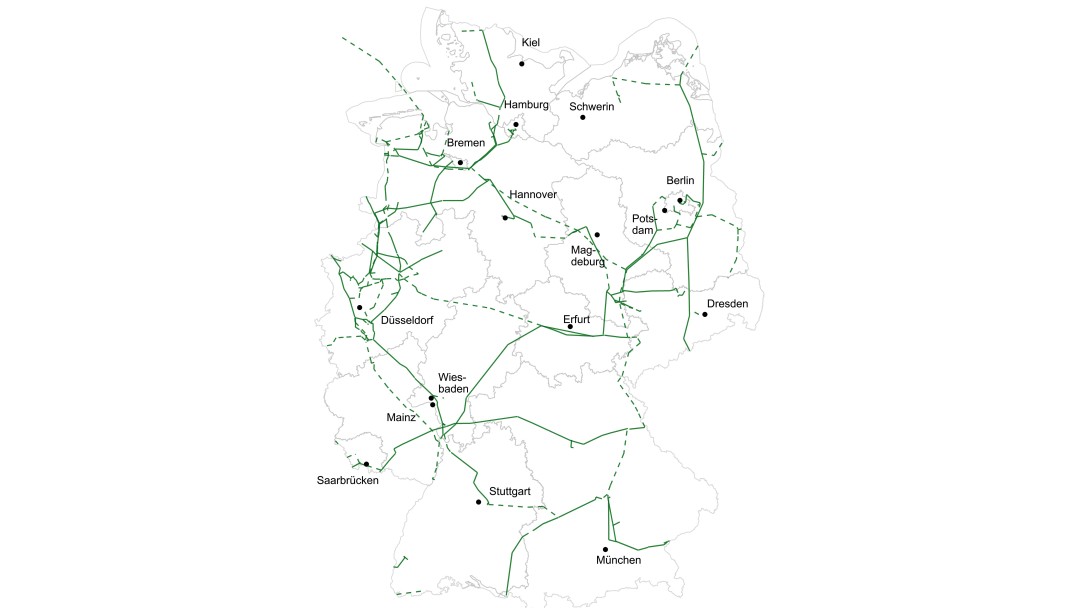Germany must become climate-neutral. This means replacing fossil fuels with climate-neutral fuels. One solution is to build hydrogen infrastructure. This is a key component of the German Federal Government’s national hydrogen strategy. As financier of a new instrument, KfW is driving forward the development of a hydrogen core network. A core network is essential for the decarbonisation of the energy supply and important industries.
As a first step, existing gas pipelines will be converted and new hydrogen-capable lines installed. The goal: for the hydrogen core network to reach a total length of 9,040 kilometres by 2032, with potential hydrogen production sites connected and important industrial centres linked up. It will also be an integral part of the European hydrogen network.
The Federal Network Agency (Bundesnetzagentur) approved the joint application of the transmission system operators for the construction of the core network on 22 October 2024. Sections 28q, 28r and 28s of the German Energy Industry Act (Energiewirtschaftsgesetz - EnWG) set out the framework conditions for the construction and financing of the hydrogen core network.
The core network will be built and operated by the private sector and financed by fees paid by hydrogen customers. Since the number of users is expected to be relatively low at the beginning, the investment costs of the core network operators cannot be fully passed on to the costumers via network fees. For this reason, the Federal Network Agency will set a ceiling for network fees. This will create an incentive for hydrogen customers to switch to hydrogen.
An amortisation account will bridge the difference between the necessary network fee and the network fee set by the Federal Network Agency through annual compensation payments. If the number of users increases, the revenue from network fees will also go up. Any additional revenues arising at a later date will be returned to the amortisation account and will offset the initial shortfall in revenues by no later than 2055.
The hydrogen core network operators jointly participate in a special purpose entity, H2 Amortisationskonto GmbH. This company manages the amortisation account. KfW finances the amortisation account with a credit line of 24 billion euros. The funds are used to finance the initial equalisation payments to the hydrogen core network operators.
KfW transfers the payments to the amortisation account so that H2 Amortisationskonto GmbH, which manages the account, can forward the funds to the hydrogen core network operators.
KfW made the first payment to the account on 24 March 2025, with the total amount amounting to around 172 million euros.

KfW will act on behalf of the Federal Government under a mandated transaction pursuant to Article 2(4) of the KfW Law .

The pipelines of the core network will be built and operated by the private sector and financed through network fees paid by hydrogen customers. An amortisation account will ensure that initial losses due to low usage will be offset by subsequent additional revenues resulting from increased usage.
As of 27 November 2024
Share page
To share the content of this page with your network, click on one of the icons below.
Note on data protection: When you share content, your personal data is transferred to the selected network.
Data protection
Alternatively, you can also copy the short link: https://www.kfw.de/s/enkB3AdT
Copy link Link copied